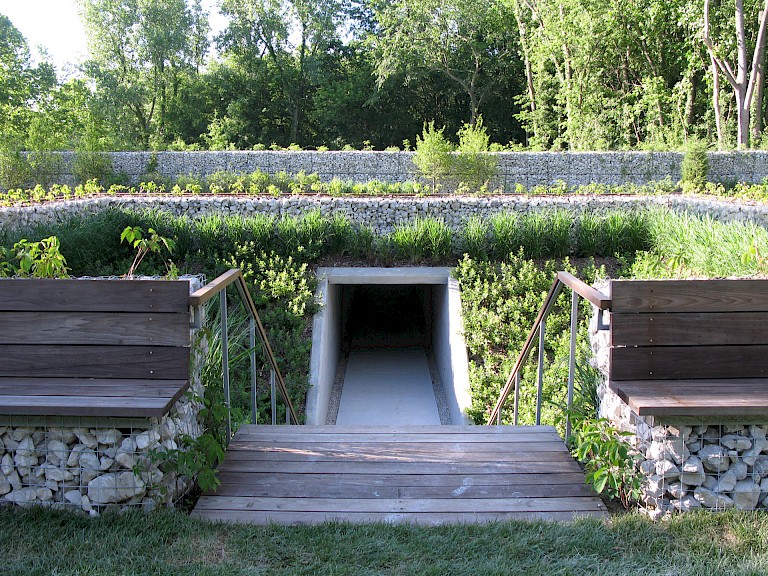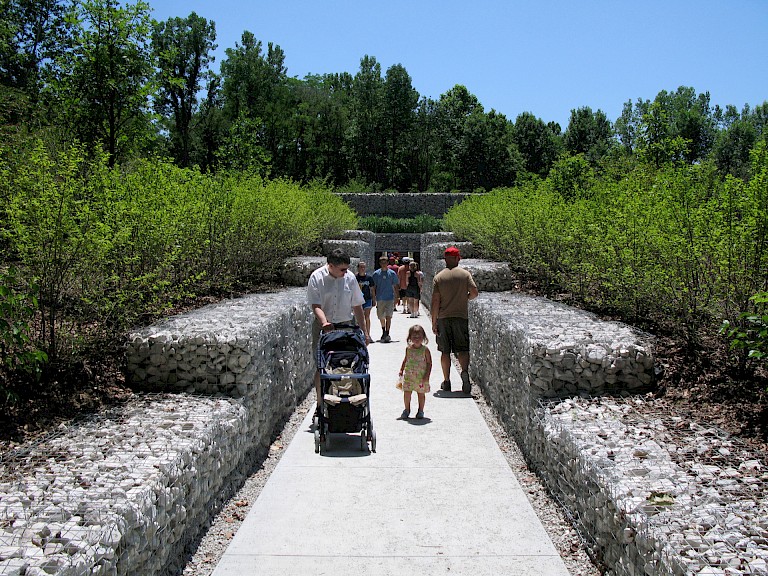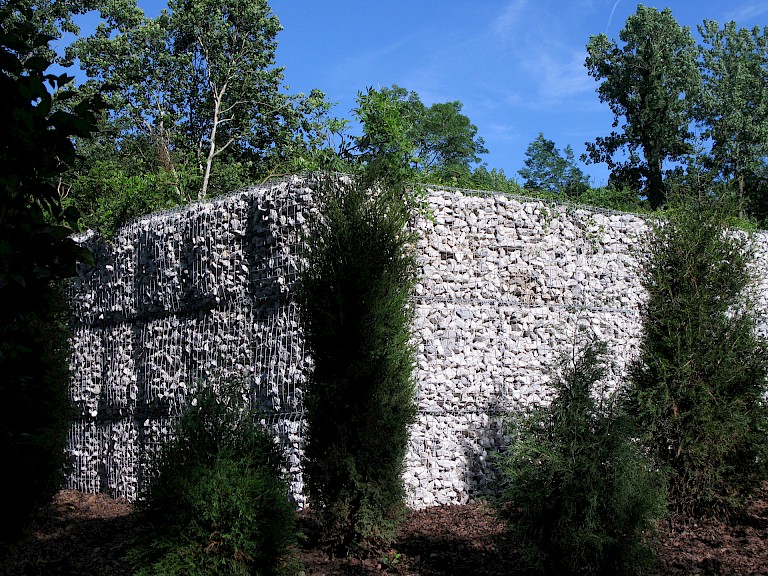



Jaar has said that the stone walls represent the atrocities and victims of the 20th and 21st century. “Visitors, who must cross the darkness of a tunnel directly below these cages before reaching the park, are invited to use this haven of peace in order to reflect, ponder, and meditate about all the tragedies that are now ingrained in our existence and in our planet,” says Jaar. “Park of the Laments carves out a space for retreat and for healing, where hope and life is literally sprouting from the rubble.”
The project has impacted the community by allowing visitors to feel removed from the world while simultaneously engaging with it. “By creating a park within a park and employing breathing, living borders made of nature, Park of the Laments tightened the ambiguous but essential link between the self and the collective, removal and involvement, contemplation and action,” says Jaar.
The project is a space for silence and meditation in a world where opportunities to pause and reflect in the public sphere are becoming scarce—and where people often find themselves retreating into the private realm to seek peace and healing. This, says Jaar, “has created dangerous correlations in contemporary society, assimilating private with peace, and public with chaos.”
Park of the Laments specifically defies this trend and proposes that the opposite is possible: that we can find peace and collective healing in the public sphere. It also serves to remind visitors of the power public art more generally. Thoughtfully designed public spaces like Park of the Laments can reach out to the public, make amends for past tragedies, and promote harmony.
“I hope the audience leaves with the notion that there are other ways of thinking about situations,” says Jaar. “For me, the space of art is a space of freedom. It is a very privileged space.”
All copyright belongs to Shanghai Academy of Fine Arts, Shanghai University.



